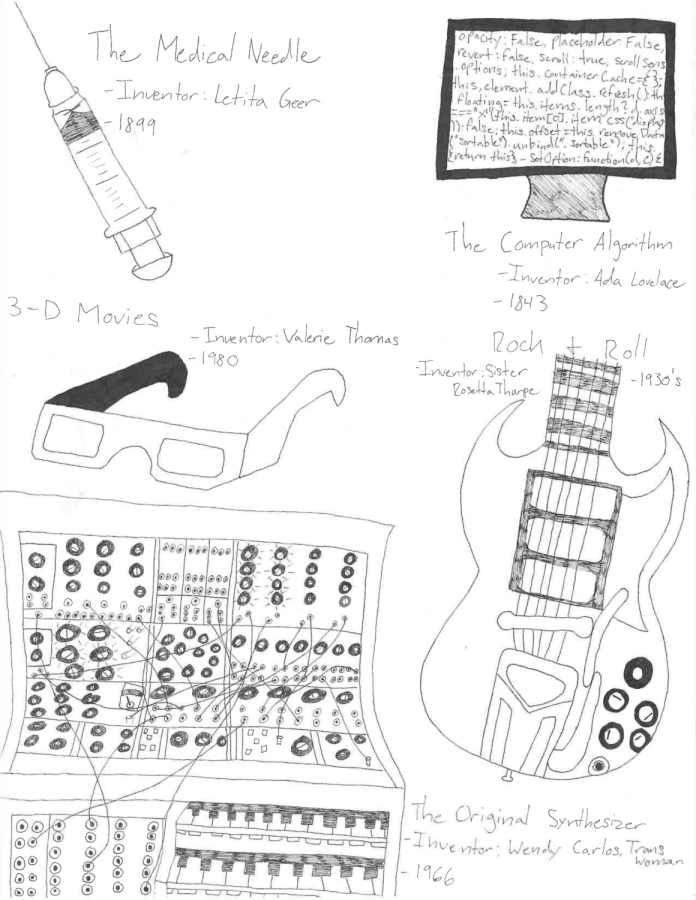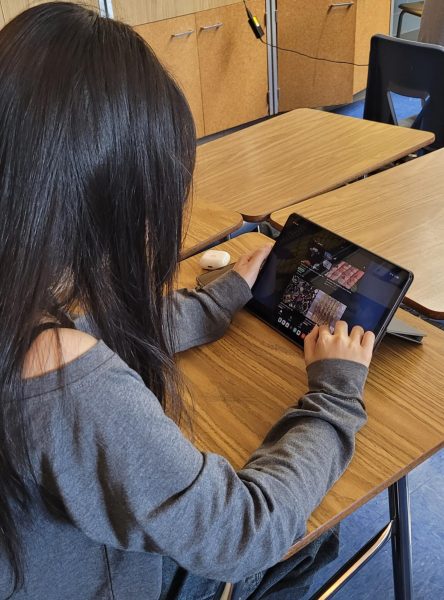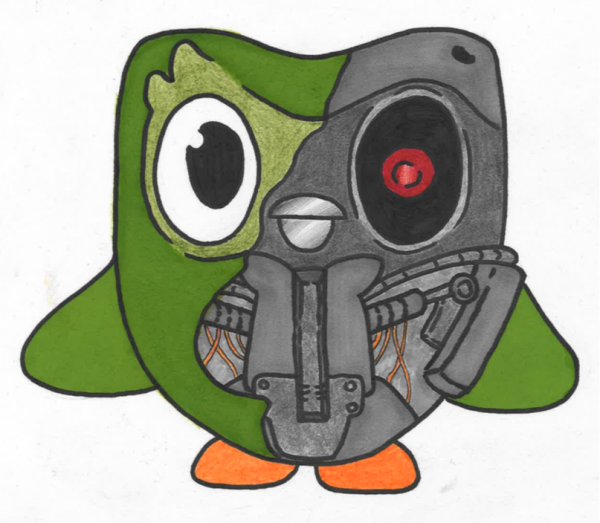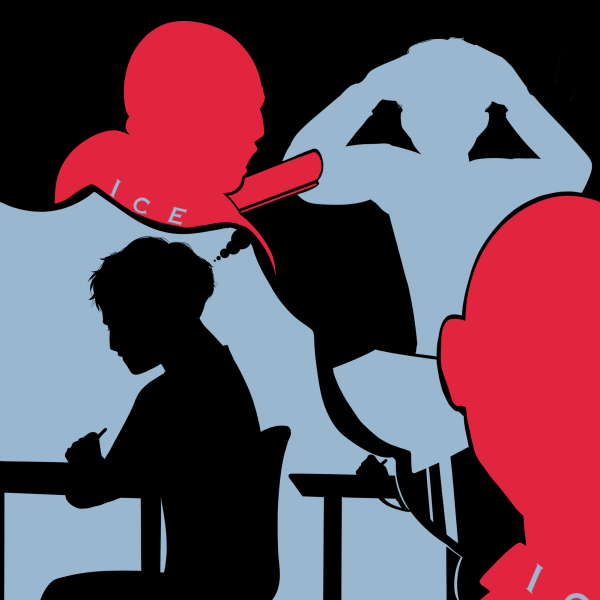Women and non-binary people in STEM rising, still face challenges
None of these inventions and innovations would have ever happened if it weren’t for all of the women and LGBTQ+ people in STEM from different time periods, starting as early as the 19th century all the way through the late 20th century.
This story was originally published in the Heights Herald print edition.
STEM: Science, Technology, Engineering and Mathematics. It’s a never ending field of opportunities in jobs, salaries and experiences focused on research and experimentation, much of it with the goal of helping the world work toward a sustainable future. STEM has become even more popular for women and non-binary people like myself in recent years. But why do these fields then get so often criticized for the lack of diversity of race, ethnicity, and gender identity? Is the field really inclusive for everyone now, or is there still work to be done?
STEM has and will always be difficult in post-secondary academia even if you’re “gifted”, hold a 4.0 GPA and maintained A’s in your high school classes. You’ll have to really work in your field to get your Bachelor’s and, if pursued, your Master’s degree too. It is dependent on what path you’re heading into because each field has different prerequisites and expectations.
Whether your major is biology, ecology, computer science or any number of the ever growing list of degrees available, STEM is an exciting world to be a part because of all the innovations, ideas and all the hard work that scientists, engineers and many more put in to make sure our world is protected and people live a comfortable life.
Speaking of innovations, women and LGBTQ+ people in the STEM have pushed through the gender gap not just recently but for many years now, and they’ve often had to do much more to get recognized than the average straight, cisgender man in the field.
Lydia Villa-Komaroff, for instance, worked as a molecular and cellular biologist dating back to the 1970s. She has been an academic laboratory scientist, university administrator and businesswoman. She helped discover how bacterial cells could be utilized to generate insulin as a part of her postdoctoral research. She also helped find a molecule responsible for the degeneration of brain cells in Alzheimer’s disease, leading to an entire field devoted to the research of how to diagnose and treat the disease. She was only the third Mexican American woman in the United States to ever receive a doctorate degree in the sciences.
To name another, Adriana Ocampo is currently a planetary geologist and the Science Program Manager at National Aeronautics and Space Administration (NASA) Headquarters. She has worked on a number of NASA planetary science projects, including the Juno mission to Jupiter and the New Horizons mission to Pluto; she helped a NASA satellite take a photo of Pluto, cementing herself as the one of the 50 Most Important Women in Science according to Discover Magazine in 2002.
There are also many amazing students right here at Columbia Heights High School (CHHS) that have plans for the future.
“Computers and coding have always interested me and I have some family members that have graduated in the computer science field so they have helped me understand what it is a lot more,” Farhiya Mohamud(12) said. “To certain people, women are supposed to do a certain thing and when they don’t, they are viewed as weird. [And] minorities were always viewed as less than and have had way less opportunities as others so joining a field like STEM that is majority white isn’t really the most welcoming.”
A major and primary example of racism in STEM is the women who worked for NASA in the 1960s, a time of discrimination and segregation; Katherine Johnson, Dorothy Vaughan, and Mary Jackson. They were incredible mathematician who helped during the Space Race, persevere through the hate, and inspire generations of other African American and minorities of mathematicians.
“[It’s] important for minorities/marginalized groups to go into STEM because it shows that it can be done,” Gisel Saldivar Ponce (12) said. “It inspires others to try as well and the more minorities go into STEM, the more we build a community that everyone can feel comfortable in. As someone who was raised in a Spanish speaking household, I can tell you from firsthand experience that seeing the Hispanic community being represented in any STEM field makes a huge difference for my family and how they feel about themselves.”
We need more representation in the STEM field, and we need more women and gender nonconforming professionals that girls and others can look up to. More minorities need the opportunity just like everyone else to have representation and ideals so they can feel encouraged to continue to pursue their dreams in STEM. And for some, school isn’t the problem—it’s the professional world.
“When I was in college, I felt treated equally and like I was a productive contributor to groups, but when I got out of school it was a whole new game,” CHHS science teacher Ms. Aimee Candella said. “When I was on the Physics exam writing committee, I was told that I should bring back ‘girls only’ physics classes; teach them things they really need like how to fix their mixers and toasters. Keep in mind that wasn’t that long ago. Science has been a ‘boys’ club’ for years. Girls have historically been taught to be quiet and [be] compliant. I want that to end because we are missing so many potential discoveries that way.”
Unfortunately, it’s a cycle of gender bias of male scientists and award holders giving out awards of discovery and invention breakthroughs to other male scientists and rarely, I mean rarely, to women in the same field. Like one or two women would win awards and medals; it’s a extreme gap in the gender ratio between men and women.
Teachers like Ms. Candella helped me, a nonbinary person, look at the wonders of the planet and life itself. She helped me understand genetics, the human body, biology as a whole and, most importantly to me, ecology. I want to start a conservation effort to protect pollinators like bees, butterflies, bats and many more insects that pollinate to help the Earth and its various ecosystems survive and thrive. But we can’t talk about the advantages and positives without talking about disadvantages and negatives that happen to women, POC/BIPOC, and LGBTQ+ people in STEM.
The elephant in the room that most needs to be addressed is that the pay gap is real, especially in STEM. Men in STEM earn annual salaries that are nearly $15,000 higher per year than women. Meanwhile, Latina and Black women in STEM earn around $33,000 less per year than a man would for the same job. This results in women being underrepresented. For instance, only around 21% of people with engineering majors are women and only around 19% of computer and information science majors are women.
The gender stereotypes that STEM so often falls victim to is unfortunate but still very prominent. The field is viewed often as masculine because of the training, dedication and education that is needed, and usually teachers and parents often underestimate girls’ math and science abilities as early as preschool. Even women and LGBTQ+ teachers can unconsciously pass down that anxiety and self-doubt to female and gender nonconforming students. It’s cyclical, and STEM being a male-dominated field means fewer women and minorities work or study math or science-related fields, perpetuating an inflexible, exclusionary, male-dominated culture.
In fact, trans and gender nonconforming students that continue in STEM majors are at a rate roughly 10% lower than other their cisgender peers. The unwelcoming and non-inclusive academic and professional space has had an unfortunate impact on trans and non-binary students.
“Nearly 54% of trans and non binary students reported feeling depressed frequently, and 30% frequently sought personal counseling, compared with 15% to 8%, respectively, of their peers,” according to a 2022 research paper published in the American Society for Cell Biology’s Life Sciences Education journal.
Despite all of the overwhelming negatives of entering the field as a woman, minority, or LGBTQ+ person, there have been trailblazers that have worked to create better spaces for more women and LGBTQ+ people. There are so many women to look up to and even if you can’t look up to someone like yourself, you could be that person for some girl or for an LGBTQ+ kid to look up to one day. Whether it’s in science, technology, engineering or mathematics, go for it, and never let anyone stop you from achieving your goals and dreams. Just be ready to fight for it to make it a little easier for those that follow you.
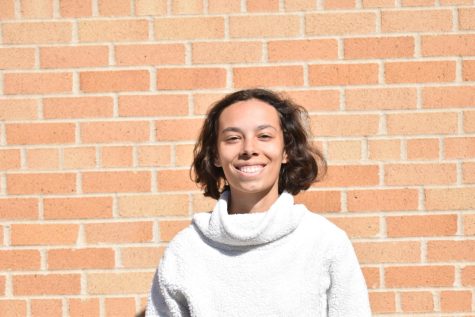
Louise Skokan is one of the funniest and most controversial staff members for The Heights Herald, currently serving as the one and only Opinion Editor....


